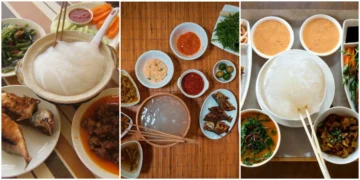Denmark—a Scandinavian country known for its progressive society, charming design sensibilities, and rich cultural traditions—also boasts a culinary heritage that has made a mark around the globe. Among the many iconic Danish dishes, Smørrebrød stands out as a timeless culinary masterpiece. This open-faced sandwich, artfully assembled on dense, buttered rye bread and topped with a variety of fresh ingredients, represents much more than a simple meal. Smørrebrød is an expression of Danish culture, reflecting a balance of simplicity, quality ingredients, and culinary precision that has been perfected over generations.
Why Smørrebrød Is the Best Food of Denmark?

What makes this dish particularly exceptional is its versatility and the artistry involved in its preparation. The beauty of Smørrebrød lies in its ability to transform everyday ingredients into an elegant meal that is both nourishing and visually appealing. The careful balance of saltiness, sweetness, tang, and creaminess in each bite speaks to Denmark’s culinary tradition of honoring simplicity while embracing sophistication. In Denmark, a well-crafted Smørrebrød is not only a testament to culinary skill but also a symbol of national pride and the deep-rooted value placed on quality, seasonal produce.
Key Ingredients of Smørrebrød (Best Food of Denmark)
The excellence of Smørrebrød is rooted in its thoughtful selection of ingredients and the meticulous way in which they are assembled:
- Rye Bread: The foundation of any good Smørrebrød is the traditional Danish rugbrød—a dense, dark rye bread with a slightly sour tang. Its robust texture and nutty flavor serve as the ideal base that holds up to generous toppings while imparting its own distinctive taste.
- Butter: A generous spread of high-quality Danish butter on the bread to create a rich, flavorful surface that enhances the toppings and adds moisture.
- Toppings:
- Pickled Herring: Often marinated in vinegar, sugar, and spices, pickled herring offers a tangy and slightly sweet flavor that contrasts beautifully with the dense rye.
- Roast Beef and Remoulade: Thinly sliced, tender roast beef paired with a creamy, slightly spicy remoulade creates a savory combination that is both hearty and refined.
- Shrimp: Cold-water shrimp, usually accompanied by a slice of lemon and a light dressing, provides a delicate, fresh flavor that highlights the simplicity of the dish.
- Egg and Caviar: A luxurious variant, where sliced hard-boiled eggs are topped with a dollop of fish roe or caviar, adding a burst of brininess and a festive touch.
- Garnishes and Condiments: Fresh herbs (like dill or chives), onions, radishes, and a squeeze of lemon add to brighten and elevate the flavors.
Art of Assembly

-
Preparing the Base: The process begins with slicing a piece of freshly baked rye bread. The slice should be thick enough to provide a sturdy base yet delicate enough to allow the flavors of the toppings to shine through. A layer of Danish butter is evenly spread across the surface, serving as both a flavor enhancer and a moisture barrier.
-
Arranging the Toppings: The placement is crucial—place evenly to ensure that each bite offers a balanced mix of textures and flavors. Whether layering thin slices of meat, arranging a neat pile of pickled fish, or decorating with a pattern of shrimp and herbs, the presentation of Smørrebrød is as important as its taste.
-
Finishing Touches: A spritz of lemon juice, a sprinkle of fresh herbs, or a few thin slices of raw onion or radish. These final touches add brightness and contrast, enhancing the overall sensory experience.
-
Serving: Smørrebrød is a part of a larger meal or as an appetizer. It is often accompanied by a small salad or a bowl of soup. The communal aspect of sharing Smørrebrød during a meal reinforces the Danish values of togetherness and the joy of simple, good food.
History of Smørrebrød

Dating back centuries, the tradition of placing simple toppings on a slice of rye bread originated in the rural kitchens of Denmark. Over time, this humble practice evolved into an art form, refined by both home cooks and professional chefs. In modern times, Smørrebrød continues to hold a special place in Danish culture. Smørrebrød represents the enduring appeal of simple, well-prepared food that brings people together.
Other Authentic Delicacies from Denmark
- Frikadeller: Traditional Danish meatballs, often served with potatoes, gravy, and pickled vegetables.
- Stegt Flæsk: Crispy, fried pork served with boiled potatoes and a parsley sauce, considered one of Denmark’s national dishes.
- Rødgrød med Fløde: A sweet, red berry pudding topped with cream, showcasing the simple yet elegant use of local fruits.
- Wienerbrød (Danish Pastry): World-famous laminated pastries that exemplify the Danish mastery of baking.
- Smørrebrød Variations: Beyond the classic open-faced sandwiches, creative modern twists on Smørrebrød continue to emerge in Danish culinary circles, merging tradition with contemporary gastronomy.










Discussion about this post